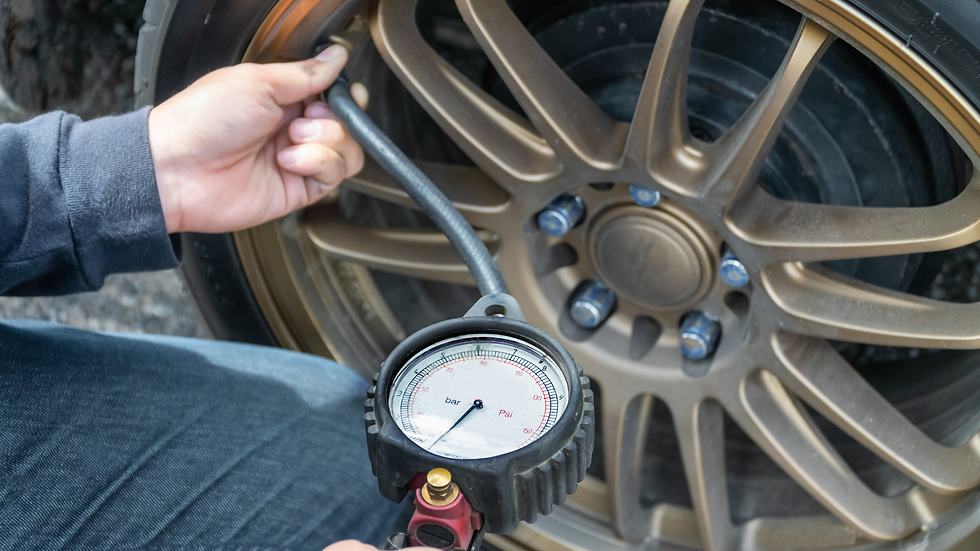Preparing Your Industrial Fleet for End-of-Financial-Year Operations
- Jason Aquadro
- Sep 19
- 3 min read
As the end of the financial year (EOFY) approaches, industrial operations across Africa enter a critical phase. Fleet managers and site supervisors must ensure that equipment is fully operational to meet output targets, audit standards, and compliance requirements. One of the most essential, yet often overlooked, components is tyre readiness.
EOFY is the perfect time to evaluate your industrial fleet's tyres—whether for budgeting, replacement planning, or maximising efficiency in the coming year.
Why Tyre Preparation Matters at EOFY
EOFY preparation isn’t just about ticking boxes. It's about:
Avoiding costly downtime during peak operations
Ensuring fleet safety before financial audits or renewals
Capturing tax benefits on tyre purchases or upgrades
Extending equipment life through proactive maintenance
Your tyres directly affect load capacity, stability, fuel use, and maintenance costs. Preparing now can significantly impact your bottom line.
Step 1: Conduct a Full Tyre Audit

Start with a comprehensive inspection across your entire fleet. Include:
Tread depth measurements
Visual checks for cracks, cuts, or uneven wear
Valve integrity and rim condition
Current pressure levels versus recommended PSI
Record all findings in a log to prioritise replacements, repairs, or rotations.
Step 2: Identify Tyres Near End-of-Life
EOFY is a great time to budget for tyre replacements. Look out for:
Tread below legal or operational minimums
Repeated puncture repairs or pressure issues
Outdated manufacturing dates (tyres degrade with age even if tread remains)
Replace worn tyres with high-quality, durable options like BKT industrial tyres designed for loaders, forklifts, and site vehicles.
Step 3: Rotate Tyres Across Your Fleet
Tyre rotation balances wear and extends lifespan. For industrial vehicles, follow rotation patterns based on usage and wear indicators.
Tip: Rotation is especially important on uneven terrain or where certain vehicles carry heavier loads.
Step 4: Check for Alignment and Suspension Issues
Tyres wearing unevenly or prematurely often indicate deeper issues with:
Axle alignment
Worn suspension components
Overloaded or imbalanced machines
Have these checked alongside your tyre review to avoid recurring problems.
Step 5: Review Inflation Practices
Under-inflated tyres reduce load capacity and increase fuel usage. Over-inflated tyres can lead to tread damage and poor traction.
Ensure your maintenance teams:
Use calibrated pressure gauges
Follow manufacturer PSI guidelines
Check pressure when tyres are cold

Step 6: Plan Ahead for Spare Tyres and Stock
Use EOFY budgeting to replenish spare tyres or bulk-purchase replacements at end-of-year pricing. Stocking ahead reduces delays from supply chain disruptions and seasonal demand spikes.
Step 7: Budget for Upgrades and Modernisation
EOFY provides an ideal opportunity to:
Upgrade to fuel-efficient or longer-wear tyres
Standardise tyre brands across the fleet
Replace tyres with models suited to local conditions and workloads
BKT industrial tyres, for example, offer excellent traction, puncture resistance, and long-lasting performance for varied industrial environments.
Step 8: Train Your Team
Even with the best tyres, improper use shortens their life. Ensure all operators and mechanics:
Conduct daily walkarounds
Know how to spot warning signs
Follow load and speed guidelines
An EOFY refresher training can prevent small issues from becoming expensive repairs.
Step 9: Analyse Tyre Performance Metrics

Use EOFY as a checkpoint to evaluate performance across your tyre inventory. Monitor metrics like:
Cost per hour or kilometre
Downtime linked to tyre issues
Frequency of repairs versus replacement
This data can help refine purchasing decisions and improve budgeting for the new financial year.
Final Thoughts
EOFY isn’t just about closing the books—it’s about preparing for future efficiency. Taking time now to assess and upgrade your industrial fleet’s tyres sets the stage for improved safety, lower costs, and uninterrupted performance in the year ahead.
Speak with your local tyre expert to review your fleet and select the best BKT tyres for your operational needs.
Inspect smart. Upgrade wisely. Enter the new financial year with confidence.




Comments